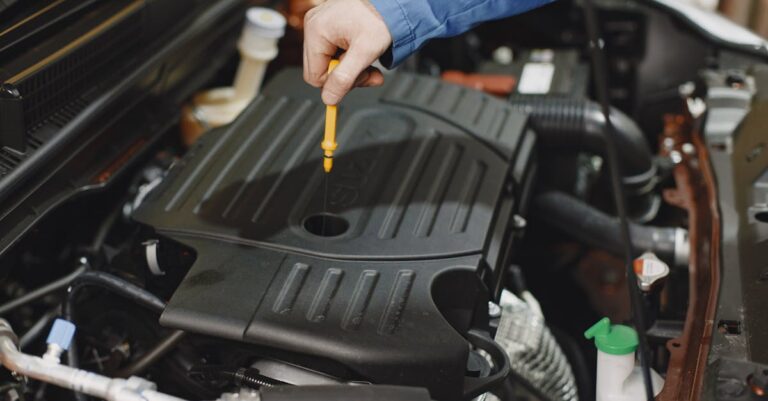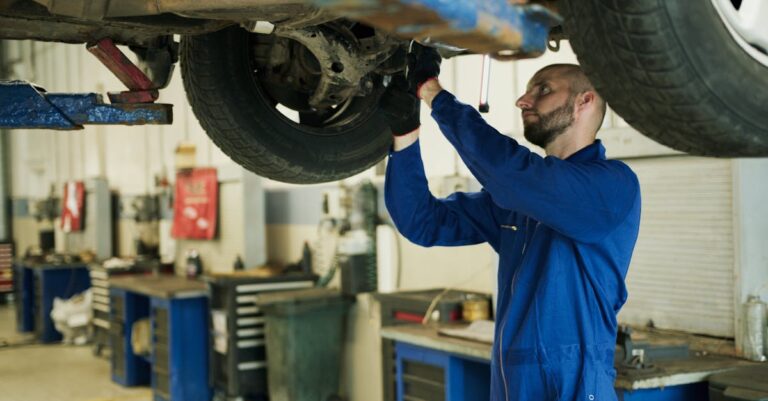Table of Contents
- Prepare Your Car For Long Storage: The Ultimate Guide
- Why Bother? The Importance of Proper Car Storage
- Getting Started: Your Pre Storage Checklist
- Scrub A Dub Dub: Deep Cleaning Before Hibernation
- Under the Hood TLC: Mechanical Preparations
- Fort Knox Your Ride: Protecting Your Car During Storage
- One Last Look: Final Checks Before You Lock Up
- Rise and Shine: Waking Your Car From its Slumber
- Conclusion: Peace of Mind Storage
- Frequently Asked Questions (FAQs)
Prepare Your Car For Long Storage: The Ultimate Guide
So, you’re planning to park your pride and joy for a while? Maybe it’s a classic car hibernating for the winter, a deployment keeping you away, or perhaps you just have an extra vehicle you won’t be using for several months. Whatever the reason, just locking the doors and walking away isn’t the best plan. Letting a car sit unattended for extended periods without proper preparation is like inviting trouble. Think flat tires, a dead battery, stale fuel, maybe even some unwelcome critters making a home in your engine bay! Sounds like a headache, right? Don’t worry, preparing your car for long storage isn’t rocket science, but it does require a bit of thoughtful effort. Let’s dive into how you can tuck your car away properly, ensuring it wakes up happy and healthy when you need it again.
Why Bother? The Importance of Proper Car Storage
You might be thinking, “It’s just a car sitting still, what could possibly go wrong?” Well, quite a bit, actually! Cars are designed to be driven. When they sit idle for long stretches, various components can degrade. Rubber parts like tires and hoses can dry out and crack. Fluids can break down or become contaminated. The battery will inevitably lose its charge. Metal parts can rust, especially if exposed to moisture. Fuel can go stale and gum up the fuel system. And let’s not forget the potential for pests – rodents love nesting in quiet, dark places like engine compartments or interiors, chewing through wires and upholstery. Taking the time to prep your car minimizes these risks, saving you potential costly repairs and major frustration down the road. It’s about protecting your investment and ensuring a smooth start up when storage ends.
Getting Started: Your Pre Storage Checklist
Before you even think about touching the car itself, a little planning goes a long way. Getting organized now means less hassle later. Think of it as setting the stage for a successful storage period.
Location, Location, Location: Choosing Your Storage Spot
Where you store your car is arguably one of the most critical decisions. The environment significantly impacts how well your car fares over time. You’ve basically got two main choices:
Indoor vs. Outdoor: Weighing the Options
Indoor storage (like your garage, a rented storage unit, or a dedicated car storage facility) is the gold standard. It offers the best protection from the elements – sun, rain, snow, wind, and extreme temperature fluctuations. UV rays fade paint and degrade dashboards, while moisture accelerates rust and mold growth. Indoors, your car is shielded from all that. It also provides better security against theft and vandalism.
Outdoor storage (driveway, backyard, uncovered parking lot) is obviously less ideal but sometimes unavoidable. If you must store outdoors, choose the best possible spot. Avoid parking under trees, which drop sap, leaves, nuts, and provide perches for birds (hello, bird droppings!). Try to find a paved surface rather than grass or dirt, as moisture rising from the ground can promote rust underneath the car. Even if storing outdoors, investing in a high quality, breathable, weatherproof car cover is absolutely essential.
Security and Safety First
Regardless of indoor or outdoor, consider security. Is the area well lit? Is it prone to theft or vandalism? If using a storage facility, check their security measures – cameras, gates, onsite personnel. Also, ensure the location is safe from potential hazards like flooding.
Gather Your Arsenal: Essential Storage Supplies
Before you start the prep work, make sure you have everything you need on hand. This might include:
- Car cleaning supplies (soap, wash mitts, buckets, microfiber towels, wheel cleaner, interior cleaner, vacuum)
- Car wax or sealant
- Fuel stabilizer
- Battery tender (trickle charger) or tools to disconnect the battery
- Tire pressure gauge and air compressor
- Pest deterrents (mothballs, peppermint oil, steel wool, rodent repellent devices)
- A high quality, breathable car cover
- Blocks or jack stands (optional, for tires)
- Basic hand tools (wrenches, sockets)
- Pen and paper (for notes!)
Scrub A Dub Dub: Deep Cleaning Before Hibernation
Putting a dirty car into storage is a big no no. Dirt, grime, bird droppings, tree sap, and road salt can all damage the paint if left to sit for months. Similarly, crumbs, spills, and dirt inside can attract pests and lead to mold or unpleasant odors.
Exterior Shine: Wash, Clay, and Wax On
Give your car a thorough wash from top to bottom. Don’t forget the wheel wells and undercarriage, where mud and salt love to hide. Use a quality car soap and the two bucket method to avoid scratching the paint. Consider using a clay bar after washing to remove embedded contaminants that washing alone won’t lift. This leaves the paint surface incredibly smooth. Finally, apply a durable coat of wax or paint sealant. This acts like a protective shield for your paint, guarding against dust, moisture, and minor scratches during storage. Clean the wheels and tires thoroughly, too.
Interior Spruce Up: Banish Dirt and Odors
Cleanliness inside is just as crucial. Vacuum everything – carpets, floor mats, seats, trunk. Wipe down all surfaces like the dashboard, door panels, and center console. Use appropriate cleaners for leather, vinyl, or fabric. Make absolutely sure there’s no food residue, wrappers, or even air fresheners left inside. These can attract pests or leave strange odors after sitting for a long time. Consider placing a moisture absorber (like silica gel packs) inside, especially if storing in a potentially damp environment, to prevent mold and mildew.
Under the Hood TLC: Mechanical Preparations
Now for the mechanical bits. These steps are vital for ensuring your car starts and runs smoothly after storage.
Fluid Dynamics: Topping Up vs. Changing
Fluids are the lifeblood of your car. Letting them sit can cause problems.
Engine Oil and Filter: Fresh Start
Used engine oil contains contaminants and acids that can be harmful if left sitting in the engine for months. It’s highly recommended to change the oil and filter before storage, even if you’re not quite due based on mileage. Fresh oil provides better protection against internal corrosion. After changing, run the engine for a few minutes to circulate the new oil.
Fuel System Savvy: Stabilizer is Your Friend
Gasoline goes stale over time, typically within a few months. Stale fuel can lose its combustibility, form gummy deposits, and clog fuel lines, injectors, or carburetors. There are two schools of thought: store with a nearly empty tank or a full tank. A full tank minimizes air space, reducing condensation buildup (water in fuel = bad). However, if the fuel goes bad, you have a lot to drain. An empty tank avoids stale fuel issues but increases condensation risk. The best compromise? Fill the tank about 90-95% full (leaving a little room for expansion) and add a quality fuel stabilizer. Follow the stabilizer instructions carefully – usually, you add it to the tank and then run the engine for 10-15 minutes to ensure the stabilized fuel circulates through the entire system.
Coolant Concerns: Antifreeze Assessment
Check your coolant (antifreeze) level and condition. Ensure it provides adequate protection against both freezing and corrosion, appropriate for the lowest temperatures your storage location might experience. If the coolant is old or nearing its service interval, it’s a good idea to flush and refill it before storage. Old coolant loses its anti corrosive properties.
Brake, Clutch, and Power Steering Fluids
Check the levels of your brake fluid, clutch fluid (if applicable), and power steering fluid. Top them up if necessary. Brake fluid is hygroscopic, meaning it absorbs moisture from the air over time. While you probably don’t need to change it specifically for storage unless it’s due, ensuring it’s topped up is good practice.
Battery Blues: Avoiding the Dead Battery Nightmare
A car battery will naturally discharge over time, even when nothing is turned on (due to parasitic drains from the car’s electronics). Leaving it connected for months will almost certainly result in a dead battery, which might not be recoverable.
Disconnect or Trickle Charge? The Great Debate
You have two main options. The simplest is to disconnect the negative battery terminal. This prevents parasitic drains from killing the battery. However, the battery will still slowly self discharge. A better solution, especially for longer storage periods (over a month or two) or if you want to maintain the car’s electronic memory settings, is to use a battery tender or trickle charger. These smart devices monitor the battery’s charge and deliver a small amount of current only when needed to keep it topped up, preventing both discharge and overcharging. Make sure you use a “maintainer” or “tender,” not a basic trickle charger that could overcharge and damage the battery if left connected indefinitely.
Tire Tactics: Preventing Those Pesky Flat Spots
When a car sits in one spot for a long time, the weight pressing down on the same section of the tires can cause them to develop flat spots. This can lead to vibrations and an uncomfortable ride when you start driving again, and sometimes the damage is permanent.
Proper Inflation and Other Solutions
The easiest preventative measure is to inflate the tires to the maximum pressure indicated on the tire sidewall (or slightly higher than the recommended pressure on the door jamb sticker, maybe 5-10 psi over). This helps the tires maintain their shape. Check the pressure before storage and periodically if possible. For very long storage or for valuable tires, you could put the car on jack stands to take the weight off the tires completely. Make sure to position the jack stands correctly on strong points of the frame or suspension to avoid damaging the vehicle. Alternatively, specialized tire cradles or “tire savers” can be placed under the wheels to distribute the weight more evenly and prevent flat spotting.
Fort Knox Your Ride: Protecting Your Car During Storage
With the cleaning and mechanical prep done, it’s time for the final protective measures.
Pest Patrol: Keeping Unwanted Guests Out
Rodents (mice, rats) and insects can cause surprising amounts of damage. They chew wires, build nests in air filters or exhaust pipes, and ruin upholstery. Block potential entry points. Stuff steel wool (not copper, it doesn’t rust) into the exhaust pipe opening (remember to remove it before starting!) and the engine air intake snorkel if accessible. Close all windows and vents. Place rodent repellents around and inside the car. Options include mothballs (though the smell can linger), peppermint oil soaked cotton balls, commercially available rodent repellents, or ultrasonic devices (if you have power access). Avoid using poison baits inside or near the car, as the pest could die inside the vehicle, leading to a much worse problem.
Cover Up: Choosing the Right Car Cover
A good car cover is essential, especially for outdoor storage, but beneficial indoors too (protects from dust, dirt, and accidental scratches). The key is breathability. A non breathable cover (like a simple plastic tarp) traps moisture underneath, promoting rust and mold. Choose a cover made from a breathable fabric designed for car storage. Ensure it fits snugly but isn’t abrasive. Indoor covers are typically lighter and focused on dust protection, while outdoor covers need to be weatherproof, UV resistant, and more durable.
One Last Look: Final Checks Before You Lock Up
Okay, almost there! Before you walk away:
- Disengage the Parking Brake: Especially for long term storage, leaving the parking brake engaged can cause the brake pads or shoes to fuse to the rotors or drums, particularly in humid conditions. Instead, use wheel chocks (sturdy blocks placed behind and/or in front of the tires) to prevent the car from rolling. This applies mainly to level ground storage.
- Windows Up: Ensure all windows are fully closed.
- Lock Doors: Simple, but don’t forget!
- Insurance and Registration: Don’t cancel your comprehensive insurance! It covers theft, vandalism, fire, and other non collision related damage that could happen during storage. Check your local regulations regarding registration for stored vehicles; you might be able to apply for a “planned non operation” status to save on fees.
- Leave Notes: If you disconnected the battery, stuffed the exhaust, or overinflated tires, leave yourself prominent reminder notes (on the dashboard, steering wheel, or driver’s seat) so you don’t forget these steps when reviving the car.
Rise and Shine: Waking Your Car From its Slumber
When it’s time to bring your car back to life, don’t just hop in and turn the key. Reverse the storage process carefully:
- Remove the car cover and any pest deterrents/blockages (like steel wool in the exhaust – crucial!).
- Check for any signs of pests or damage. Look under the hood and inside the car.
- Reconnect the battery if you disconnected it, or unplug the battery tender. Ensure terminals are clean and tight.
- Check tire pressures and adjust them back to the manufacturer’s recommended levels (found on the driver’s door jamb sticker). Remove jack stands or chocks.
- Check all fluid levels again (oil, coolant, brake fluid, etc.) and top up if needed.
- Visually inspect belts and hoses for cracks or brittleness.
- Once everything looks good, start the engine. Let it idle for a while, allowing fluids to circulate and the engine to reach operating temperature. Listen for any unusual noises.
- Check the brakes carefully before driving. Press the pedal – it should feel firm. Test them gently at low speed initially.
- Take it easy on your first drive. Listen and feel for anything out of the ordinary. The tires might feel slightly lumpy initially if minor flat spotting occurred, but this often smooths out after a few miles.
Conclusion: Peace of Mind Storage
Preparing your car for long storage might seem like a lot of steps, but it’s truly worth the effort. Think of it as tucking your automotive friend into bed properly so it can rest peacefully and wake up refreshed. By following these guidelines – cleaning thoroughly, managing fluids, caring for the battery and tires, protecting against pests, and choosing the right location – you drastically reduce the risk of unpleasant surprises and potentially expensive repairs when it’s time to hit the road again. A little preventative maintenance now ensures you can enjoy your car without worry later. Happy storing!
Frequently Asked Questions (FAQs)
1. Should I start the car periodically during storage?
Generally, it’s not recommended unless you can drive the car properly. Just starting the engine and letting it idle for a few minutes isn’t enough to fully warm up all components (like the exhaust system), charge the battery effectively, or circulate fluids adequately. This short running can actually create more condensation in the engine and exhaust, potentially causing more harm than good. If you can take the car for a proper drive (15-20 minutes) every few weeks, that’s ideal. If not, stick to the pre storage prep and use a battery tender.
2. How long is “long term” storage? When should I take these steps?
These preparations are generally recommended if you plan to store your car for longer than 30 days. For shorter periods (a few weeks), simply ensuring it’s clean, parked in a safe spot, and maybe connecting a battery tender might suffice. However, the longer the storage period, the more critical each preparation step becomes.
3. Can I just use a regular tarp instead of a car cover?
Please don’t! Regular plastic tarps are not breathable. They trap moisture between the tarp and the car’s surface, which can lead to mold, mildew, and even accelerate rust formation on the paint and metal. Always invest in a purpose made, breathable car cover suitable for your storage environment (indoor or outdoor).
4. What’s the deal with fuel stabilizer? Does it really work?
Yes, fuel stabilizer absolutely works and is crucial for storage longer than a month or two. Gasoline contains volatile compounds that evaporate over time, and oxidation occurs, leading to gummy deposits and varnish. A good fuel stabilizer slows down this degradation process, keeping the fuel fresh and preventing fuel system clogs. Make sure to add it to a nearly full tank and run the engine briefly to circulate it.
5. Do I need to put my car on jack stands?
It’s not strictly necessary for most storage situations, especially if it’s only for a few months. Overinflating the tires significantly reduces the risk of flat spots. However, for very long term storage (a year or more), or if you have particularly expensive or sensitive tires (like those on classic or performance cars), using jack stands to take the weight off the tires completely is the best way to guarantee no flat spotting occurs. Just ensure you use them safely and correctly.









